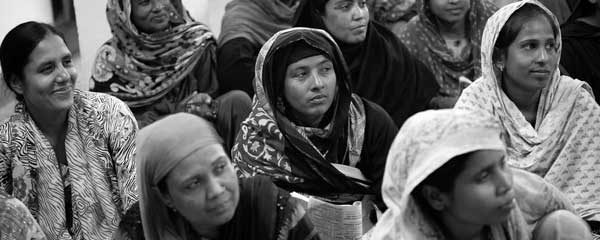
A conversation with Johanna Godoy
Gallup's Regional Director for the World Poll in Latin America and the Caribbean
What do you see as the No. 1 problem facing women in your region?
Godoy: The two main problems women face in Latin America are violence -- or insecurity -- and inequality.
Femicide rates in some countries are very high. In Mexico, Nicaragua, El Salvador and even countries like Argentina, one woman every day is killed because of her gender. Studies in Brazil show that one in three women have experienced a violent episode in the past year. In general, a "machismo" mindset is still very present in most of the countries in this region.
It's hard for Latin American women to compete with men, especially in terms of salary and job opportunities. Nevertheless, it is easy to see women's gains in business and politics. In recent years, Latin America has elected more female presidents than any other part of the world.
What do Gallup's World Poll data say about it? Are things getting better or worse?
Godoy: Our World Poll data show that people in Latin America continue to feel less safe than people do in other regions, and there has been a general decline in how safe they feel in the past five years. Latin American women feel significantly less safe than men do walking alone at night in the areas where they live, and the gap shows no sign of narrowing. In 2017, less than one-third of women felt safe.

Our data also show that fewer than one in four women in Latin America overall say women in their countries are treated with respect and dignity. In 2017, this percentage was lowest in Colombia (15%) and highest in Nicaragua (46%). Numbers have been declining in Venezuela, Mexico, Panama and Ecuador in the past five years. So, in general, the data do not show much improvement in this area.
Is the situation getting better or worse in some countries than others? If it is getting better, what is going on? What are governments or nongovernmental organizations (NGOs) doing?
Godoy: Governments and NGOs have created media campaigns to raise awareness of the problems women face. The improvements are slow. We can see positive indicators like the rising number of women with advanced degrees in top positions in the government and private sector. Also, there are individual initiatives across the region calling women who have suffered from violence to get together and fight together. There are organizations focused on girls and their rights, and some that are introducing young women to technology and job opportunities.
Do you have any stories or examples from your work in these countries that you can share that illustrate how things are getting better or worse for women?
Godoy: On different occasions, we had to finish the interview suddenly because the man of the household would not allow his wife or girlfriend to be interviewed. We have had to interrupt interviews because the man of the household arrived after drinking alcohol and turned verbally violent toward the women in the house, and even toward the interviewers.
One day, we were in a low socio-economic area interviewing a young woman. We were sitting on the floor. The house was very basic. When we asked the ladder question [the Cantril Self-Anchoring Striving Scale], she responded, "10" [best possible life]. When the interview ended, I asked her why she selected that response, and she said because she was alive and that she does not expect much more.
But, Latin America is a land of contrast. Despite the gender inequality and violence toward women, it's also a culture of matriarchy, where the older woman (grandmother, mother) is very involved in the day-to-day decisions and is commonly seen as the head of the house. It's very common for a household to be without a male figure. The mother figure is very strong in the Latin culture.
Do you ever think something like the #MeToo movement that has been highly publicized in the U.S. could happen in your region?
Godoy: There are similar movements in some countries in the region. For example, in Argentina, there is a movement called #NiUnaMenos that started before #MeToo spread in the U.S. There have been multiple protests and marches. In Mexico, actresses and famous people in the media have raised their voices. The short response is yes.
Find out more about Gallup's World Poll and its survey research in Latin America.




